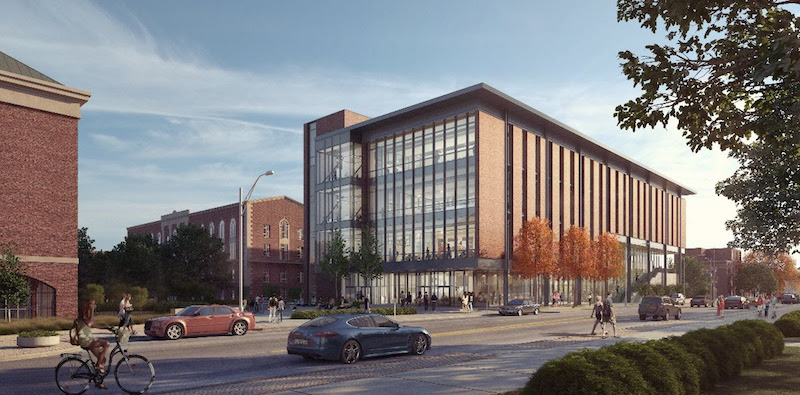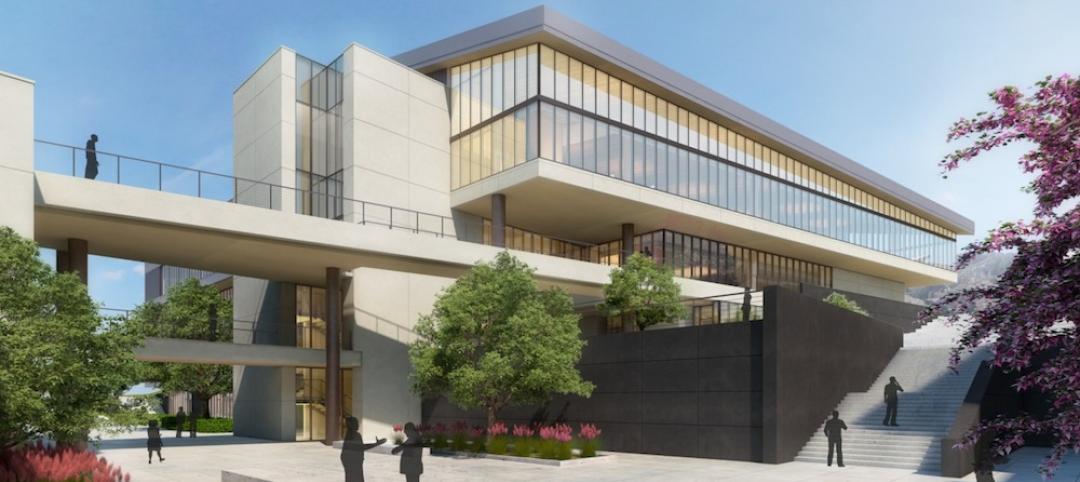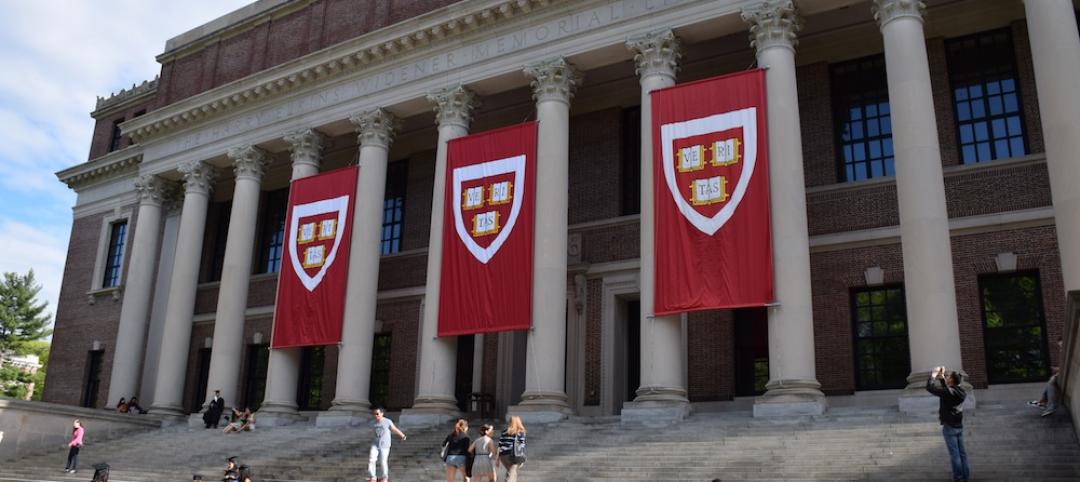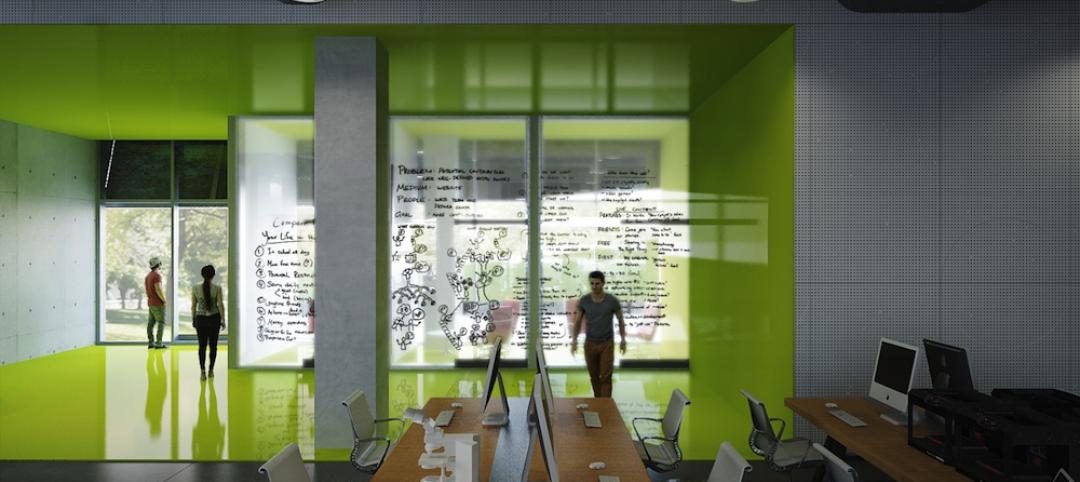University of Illinois at Urbana-Champaign Chancellor Robert Jones and local academic and civic leaders recently broke ground on a new Campus Instructional Facility that is meant to celebrate the cooperation between architecture and engineering.
The structure celebrates how architecture and engineering work together and is meant to enhance such collaboration. Designed by Skidmore, Owings & Merrill LLP (SOM), the building will have flexible, open spaces for learning. It also will include collaboration spaces that will be flexible enough to meet the evolving needs of the university community.
See Also: Curtin University library redevelopment will modernize iconic campus structure
“The design of the Campus Instructional Facility blends the rich history of the University of Illinois with its progressive, technology-focused approach to learning. In designing the building, we sought to celebrate the intersection of architecture and engineering, while creating an environment where experimentation and invention could thrive,” says Brian Lee, Design Partner.
Situated adjacent to the main engineering quadrangle at Springfield Avenue and West Wright Street, the building will be used for contemporary teaching and learning, with a variety of types of spaces designed to enhance collaboration between students and faculty. Additionally, this focus is meant to encourage and develop new hands-on learning technologies.

“The Campus Instructional Facility Project will ensure that we continue to create learning environments that inspire collaboration and interactive education for our students. We believe this facility will be a catalyst for innovation and creativity,” says Chancellor Robert Jones.
The 122,000-square-foot, four-story building will have spaces for lecture, classroom, collaboration, social environments, and for other uses. A central spine in the building brings together its public spaces and enables views across all floors as well as views of the engineering quadrangle. A 60-foot long-span space with flexible partitions will allow large class configurations; classrooms will be distributed along the building’s core. A 500-seat auditorium will be in the basement. The building’s 23 active learning and traditional classrooms will range in size, from small spaces for as few as 24 students, to the large auditorium

The building is scheduled to be completed in 2021. It’s state-of-the-art approach to learning reflects the dynamic nature of technological and organizational change in the architecture, engineering, and construction industry. Tech tools are bringing various disciplines together, creating smarter projects.
“SOM was built on the importance of collaboration between architects and engineers, and that spirit continues to be championed today. We are thrilled to have the opportunity to create a home for interdisciplinary learning and have an impact on the education of future students,” says William F. Baker, Structural Engineering Partner, and University of Illinois Engineering alumnus.
Related Stories
University Buildings | Mar 11, 2016
How architects can help community colleges promote community on campus
Even in the face of funding challenges and historic precedent, there are emerging examples of how partnership between two-year academic institutions and designers can further elevate community on campus. CannonDesign's Carisima Koenig has a few key examples.
University Buildings | Mar 1, 2016
The 5 most questionable college and university rankings of 2015
SmithGroupJJR's David Lantz identifies five of the most flawed higher education rating systems, including ones with arbitrary categories, and others that equate college with a transactional investment.
University Buildings | Feb 29, 2016
4 factors driving the student housing market
In the hyper-competitive higher education sector, colleges and universities view residence halls as extensions of their academic brands, both on and off campus.
University Buildings | Feb 17, 2016
New ideas to help universities attract and empower STEM students
Educational institutions are focusing on new learning strategies that engage students in activities, enable collaboration across STEM disciplines, and encourage students to use their hands just as much as their heads, as Stephen Blair of CannonDesign writes.
Multifamily Housing | Feb 1, 2016
Top 10 kitchen design trends for 2016
Charging stations, built-in coffeemakers, and pet stations—these are among the top kitchen design trends for the coming year, according to a new survey of kitchen and bath designers by the National Kitchen & Bath Association.
| Jan 14, 2016
How to succeed with EIFS: exterior insulation and finish systems
This AIA CES Discovery course discusses the six elements of an EIFS wall assembly; common EIFS failures and how to prevent them; and EIFS and sustainability.
Greenbuild Report | Dec 10, 2015
AASHE’s STARS tool highlights the university sector’s holistic approach to sustainability
Buzzwords like “living lab” and “experiential learning” are indicative of the trend toward more holistic sustainability programs that incorporate all facets of college life.
University Buildings | Nov 5, 2015
How active design is reshaping higher education campuses
Active design, a dynamic approach to design with a primary focus on people, assists students in learning to make healthy choices, writes LPA's Glenn Carels.
University Buildings | Nov 4, 2015
Yale completes Singapore campus
The Yale-NUS College has three residence halls and two administrative and academic buildings, with courtyards in the middle of them all.
University Buildings | Oct 16, 2015
5 ways architecture defines the university brand
People gravitate to brands for many reasons. Campus architecture and landscape are fundamental influences on the college brand, writes Perkins+Will's David Damon.

















